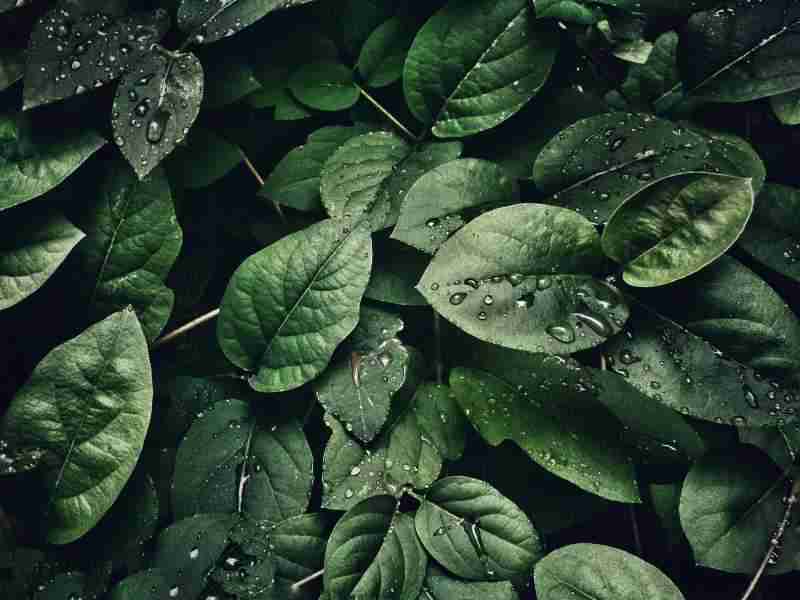In the world of water damage restoration, innovative technologies play a crucial role in ensuring effective and efficient services. One such technology is thermal imaging, a game-changer in moisture detection. This blog post will delve into the role of thermal imaging in moisture detection, providing insights into how this technology is revolutionizing the industry. At Steamaster, we understand the importance of prompt and reliable services when dealing with water damage. That’s why we employ advanced techniques like thermal imaging to ensure we offer top-notch water removal, fire and storm damage cleanup, mold removal, and more. Our commitment to using cutting-edge technology in our services has made us a trusted name in emergency water damage restoration. So, whether you’re dealing with a minor leak or a major flood, you can count on us to provide the best solutions 24/7.
Understanding the Basics of Thermal Imaging

Thermal imaging, also known as infrared imaging, is a non-invasive technique that allows the user to visualize and quantify changes in temperature. This technology is particularly useful in the field of moisture detection, as it can identify areas of moisture that may not be visible to the naked eye. The technology works by detecting the heat emitted by an object, which is then translated into a visual image. This image can reveal temperature differences, which can indicate the presence of moisture.
For instance, a wall that is damp will be cooler than a dry wall, and this difference can be detected and visualized using thermal imaging. This makes it a valuable tool for professionals in the water damage repair and mold remediation fields.
“Thermal imaging is a powerful tool that can reveal hidden moisture problems, helping to prevent costly repairs and health issues.”
In addition to detecting moisture, thermal imaging can also be used to locate leaks, identify insulation gaps, and even detect pests. It’s a versatile tool that can save time and money in the long run.
- Thermal imaging can detect hidden moisture in walls, ceilings, and floors.
- It can also be used to locate leaks and insulation gaps.
- Thermal imaging can even be used to detect pests, such as termites or rodents.
For more information on how thermal imaging can be used in moisture detection, check out our blog or contact our team of experts.
The Science Behind Moisture Detection

Thermal imaging plays a pivotal role in moisture detection, providing a non-invasive, efficient method to locate hidden moisture in various materials. This technology operates on the principle of detecting temperature differences on the surface of materials. Moist areas tend to have a different temperature than dry areas due to the evaporation process, which either cools or heats the surface.
Thermal imaging cameras capture this temperature variance and translate it into a visual image. The color gradient in the image indicates the temperature differences, with cooler areas often suggesting the presence of moisture. However, interpreting these images requires expertise, as other factors can also cause temperature variations.
To ensure accurate detection, it’s crucial to combine thermal imaging with other methods like moisture meters. These devices measure the moisture content in materials, providing quantitative data to support the thermal images.
Moreover, thermal imaging is not only useful for detecting moisture but also for monitoring the drying process. By providing a visual representation of the moisture distribution, it helps to ensure that all damp areas have been adequately dried, preventing potential mold growth.
In conclusion, thermal imaging is a powerful tool in moisture detection, offering a quick, non-destructive way to locate and monitor moisture. However, it’s essential to use this technology as part of a comprehensive approach, including other methods like moisture meters, to ensure accurate results. For more information on moisture detection and other related topics, visit our blog.
The Importance of Thermal Imaging in Moisture Detection
Thermal imaging plays a crucial role in detecting moisture, a critical aspect in maintaining the structural integrity of buildings and ensuring a healthy living environment. This technology allows professionals to identify hidden moisture issues that are not visible to the naked eye, thereby preventing potential damage and costly repairs.
Thermal imaging works by detecting temperature differences on surfaces. Moist areas tend to be cooler due to the evaporation process, and these temperature variations are captured by thermal cameras. This non-invasive method is highly effective in detecting moisture in walls, ceilings, and floors, even in the early stages.
The use of thermal imaging in moisture detection is not only beneficial for property owners but also for professionals in the water damage repair and mold remediation fields. It allows them to accurately locate the source of moisture, assess the extent of the damage, and plan effective remediation strategies.
Moreover, regular thermal imaging inspections can help in early detection of moisture problems, preventing the growth of mold and mildew, which can lead to health issues. It also aids in identifying insulation gaps and energy inefficiencies, contributing to a more sustainable living environment.
In conclusion, the importance of thermal imaging in moisture detection cannot be overstated. It is an invaluable tool in maintaining the health and longevity of our homes and buildings.
How Thermal Imaging Works in Detecting Moisture
Thermal imaging, also known as infrared imaging, is a powerful tool used in moisture detection. This technology works by detecting temperature differences on surfaces, which can indicate the presence of moisture. When a surface is wet, it typically has a different temperature than the surrounding dry areas due to the evaporative cooling effect of water. This temperature difference is captured by the thermal imaging camera and displayed as a color-coded image, with different colors representing different temperatures.
Thermal imaging is a non-invasive method, meaning it can detect moisture without causing any damage to the surface being inspected. This makes it an ideal tool for detecting moisture in hard-to-reach areas or delicate materials. However, it’s important to note that thermal imaging doesn’t directly detect moisture; it detects temperature differences which may indicate moisture. Therefore, it’s often used in conjunction with other tools like moisture meters for accurate detection.
At Steamaster Clean, we use advanced thermal imaging technology in our moisture detection services. Our trained professionals are skilled at interpreting thermal images and identifying signs of moisture. This allows us to locate the source of the moisture and take appropriate action to prevent further damage. Whether it’s a hidden water leak or a case of condensation, our thermal imaging services can help you identify and resolve moisture issues before they escalate.
For more information on our moisture detection services, or to schedule a consultation, please contact us.
The Benefits of Using Thermal Imaging for Moisture Detection

Thermal imaging technology has revolutionized the process of moisture detection, offering a range of benefits that traditional methods cannot match. One of the key advantages is its non-invasive nature. Unlike other techniques, thermal imaging does not require any physical contact with the surface being inspected. This allows for a comprehensive analysis of large areas in a short time, reducing the risk of missing any hidden moisture pockets.
Another significant benefit is the ability to detect moisture issues before they become visible to the naked eye. Early detection is crucial in preventing further damage and costly repairs. Thermal imaging can identify temperature differences caused by evaporation, indicating the presence of moisture. This technology can be particularly useful in water damage repair and mold remediation, where it is essential to locate all sources of moisture to ensure a thorough cleanup.
Moreover, thermal imaging provides a visual representation of the moisture problem, making it easier to understand the extent and location of the issue. This can be invaluable in planning the most effective course of action for remediation.
Finally, thermal imaging can also be used for ongoing monitoring of moisture levels. This is particularly beneficial in water leak location and moisture detection, where it can help to verify the success of remediation efforts and ensure that the problem has been fully resolved.
In conclusion, the use of thermal imaging in moisture detection offers numerous benefits, from early detection and non-invasive analysis to visual representation and ongoing monitoring.
Practical Applications of Thermal Imaging in Moisture Detection
Thermal imaging technology has revolutionized the way we detect moisture, offering a non-invasive, efficient method to locate hidden water leaks and dampness. This technology is particularly useful in the field of water damage repair, where it can help identify the source of moisture and the extent of the damage. It is also invaluable in mold remediation, as it can detect the presence of moisture that may lead to mold growth.
In the construction industry, thermal imaging is used to detect moisture in building materials, ensuring the structural integrity of the building. It can also be used in home inspections to identify potential issues, such as leaks in the roof or plumbing, before they become major problems.
In the field of sanitation, thermal imaging can help detect moisture in areas that are difficult to access or visually inspect, such as behind walls or under floors. This can be particularly useful in sewage backup and biohazard cleanup, where it is crucial to ensure all moisture has been removed to prevent further contamination.
Thermal imaging is also used in the automotive industry to detect moisture in vehicles, which can lead to corrosion and damage. It can also be used in the agriculture industry to monitor soil moisture levels, helping farmers optimize their irrigation strategies.
Overall, the practical applications of thermal imaging in moisture detection are vast and varied, offering a reliable, efficient method to detect and locate moisture in a wide range of settings.
Future Developments in Thermal Imaging for Moisture Detection
Thermal imaging technology has revolutionized the process of moisture detection, offering a non-invasive method to identify and locate hidden moisture in various structures. As we look to the future, advancements in this technology promise even greater accuracy and efficiency. One such development is the integration of artificial intelligence (AI) and machine learning algorithms. These technologies can analyze thermal images in real-time, identifying patterns and anomalies that might indicate moisture presence. This could significantly enhance the speed and accuracy of moisture detection, reducing the risk of undetected water damage.
Another promising development is the miniaturization of thermal imaging devices. Smaller, more portable devices would allow for easier access to hard-to-reach areas, increasing the thoroughness of inspections. Furthermore, advancements in sensor technology could lead to higher resolution thermal images, providing more detailed and accurate data for moisture detection.
In the realm of software, we can expect more sophisticated image processing techniques that can further improve the accuracy of moisture detection. For instance, 3D thermal imaging, which provides a three-dimensional view of the area being inspected, could become a standard feature in future thermal imaging devices.
These advancements not only promise to improve the effectiveness of moisture detection but also have the potential to transform related fields such as water damage repair and mold remediation. As thermal imaging technology continues to evolve, it will undoubtedly play an increasingly vital role in maintaining the health and integrity of our homes and buildings.
In conclusion, thermal imaging has revolutionized the field of moisture detection, making it more efficient, accurate, and non-invasive. It has proven to be an invaluable tool for professionals in various industries, including construction, home inspection, and disaster recovery. By enabling us to see what the naked eye cannot, thermal imaging helps in early detection of moisture problems, preventing potential damage and saving considerable time and money. As technology continues to advance, we can only expect thermal imaging to play an even more significant role in moisture detection in the future.













